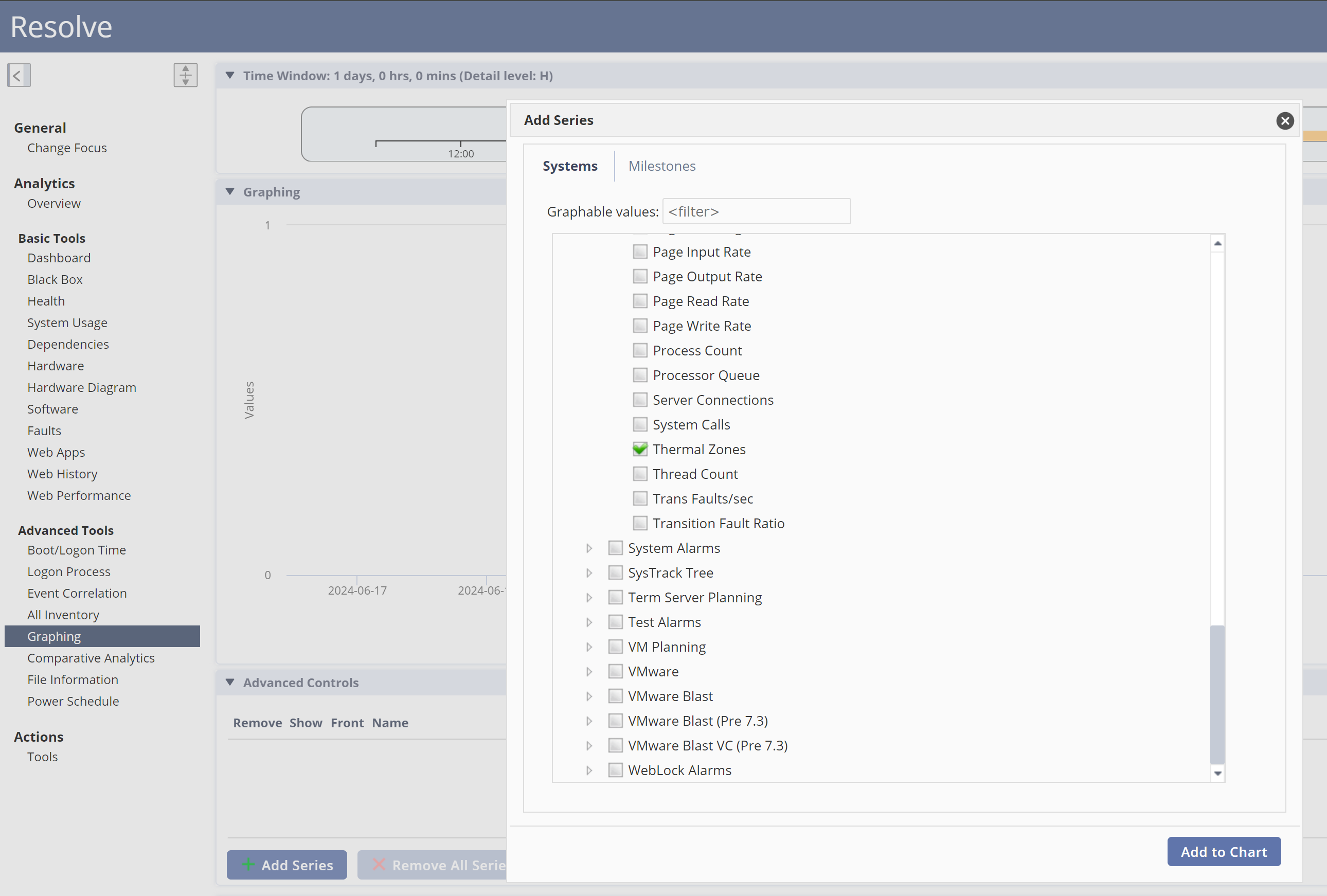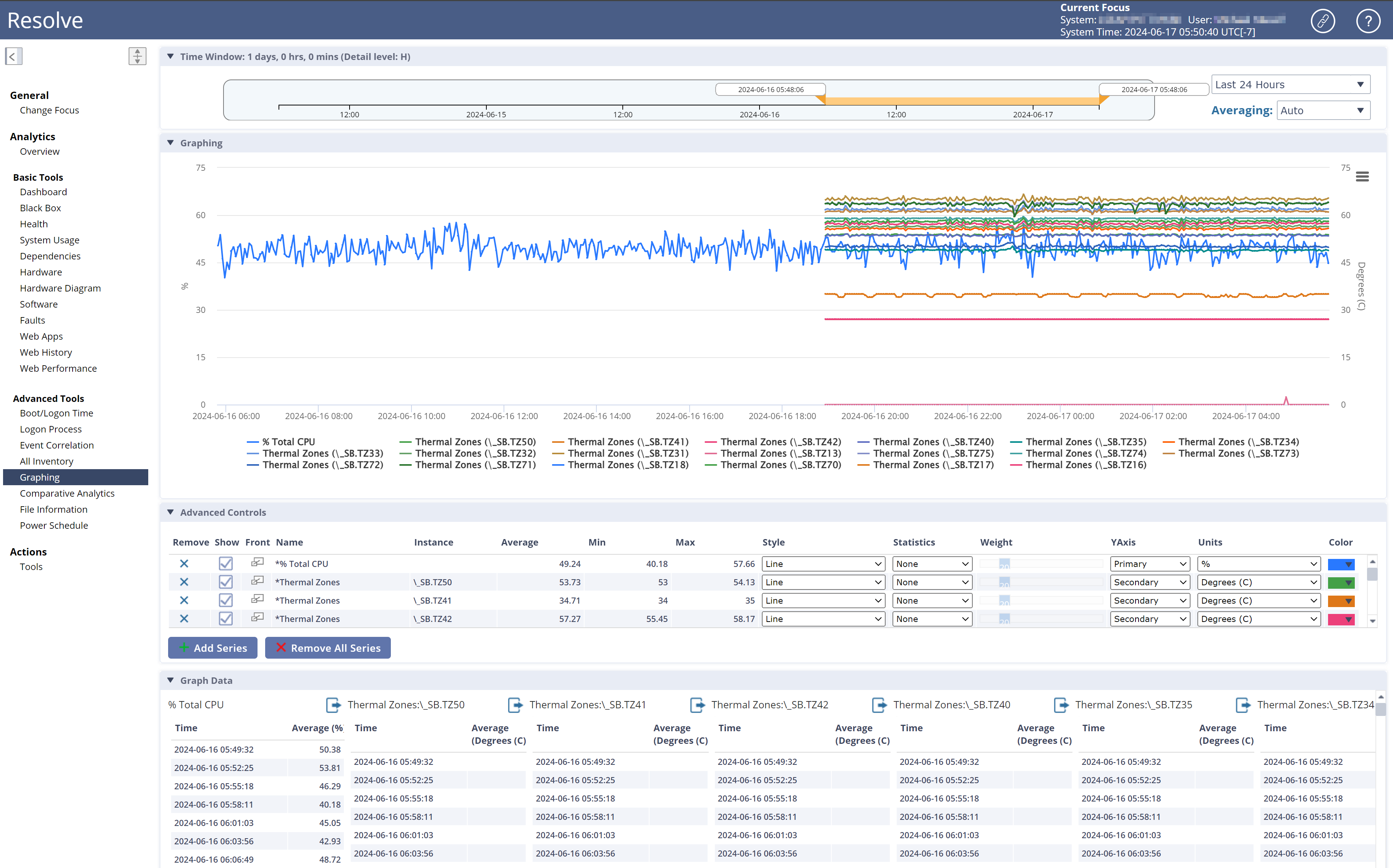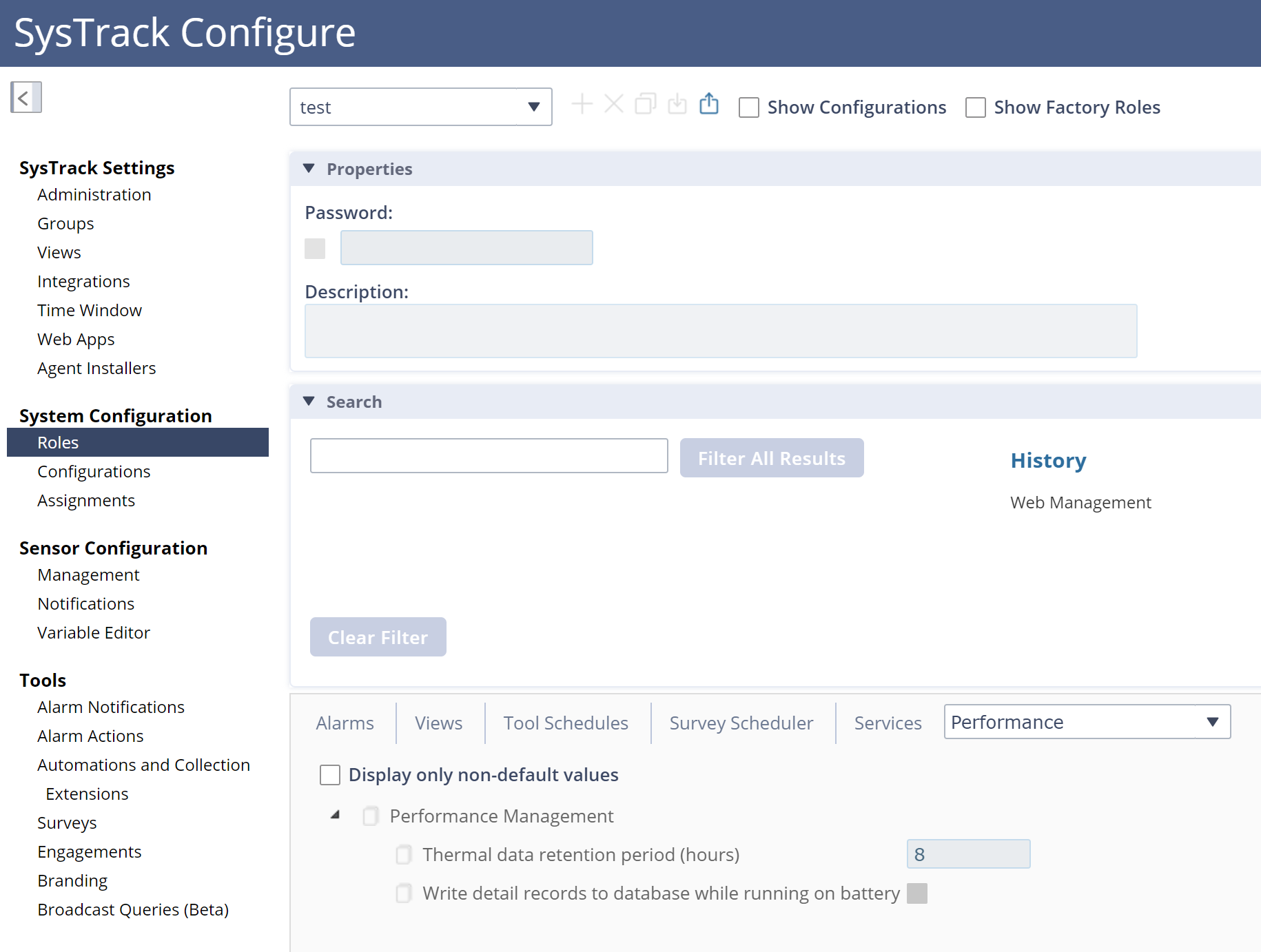Analyze Thermals Data
SysTrack includes a Thermals series, which collects thermal temperature data for the CPU and other thermal zones of your systems.
When your Support personnel need to troubleshoot a user's system because of poor performance or complaints of running too hot, they can view the Thermals series for the user's system to see the temperature trends and whether they indicate that the system's temperature has been unusual or has remained within an acceptable range.
On Windows systems, the data comes from the Windows value named CPU Thermal Zone (if available). For Mac systems, the data comes from the highest macOS CPU Die temperature value, and it is not an average. For Linux systems, we currently have support for x86-64 Intel and AMD processors.
The data is present on a per manufacturer per machine basis. We use the WMI call Win32_PerfFormattedData_Counters_ThermalZoneInformation. In order for us to collect thermal data, the WMI needs to have values.
Use the Thermals Series
To use the Thermals series to analyze trends on a system, add the series in the Advanced Controls section of Resolve's Graphing Tool:
-
Select the Add Series button.
-
In the Add Series dialog box, select the Systems tab.
-
In the list of values, expand System.
-
Check the Thermal Zones check box.
-
Select the Add to Chart button.

Now you are ready to use the Graphing and Graph Data sections of the tool to analyze your data, as explained in Graphing Tool. You can also add and use the Thermal Zones series in the Black Box Tool.

How to Change the Data Retention Period
By default, SysTrack captures the data for the Thermals series every 15 seconds for eight hours. You can change the default of eight hours to a number of hours you choose.
To change the default setting, follow these steps:
-
Go to Configure.
-
Under System Configuration, select Roles.
-
To edit, select the lock so that you can edit the page.
-
In the Additional Settings list box, select Performance.

-
Expand the Performance Management options.
TIP: The Write detail records to database while running on battery check box is not related to the Thermal data retention period setting.
-
In the Thermal data retention period (hours) field, change 8 to the number of hours you want. If you change this, it affects only the 15 second data.
IMPORTANT: Depending on the type of systems you are monitoring, the system could have a high number of thermal zones (such as 36) or a lower number (such as 4). If you are monitoring systems with a high number of thermal zones, the best practice is to leave the Thermal data retention period (hours) field at the default of eight hours, so that your database of collected data does not become too large, which could increase resource usage on the child system. If the system has a lower number of thermal zones, you can increase the retention period to be able to do a deeper trend analysis for a longer period. -
At the top of the page, select Save Changes.
On This Page